THE WITCH MUST DIE

Copyright 1999 by Sheldon Cashdan
Published by Basic Books,
A Member of the Perseus Books Group
All rights reserved. No part of this book may be reproduced in any manner whatsoever without written permission except in the case of brief quotations embodied in critical articles and review.
For information, address Basic Books,
387 Park Avenue South, New York, NY 10016-8810.
The author acknowledges the following for permission to reprint excerpts and/or illustrations from:
The Little Girl and the Wolf from FABLES IN OUR TIME, Copyright 1940 James Thurber. Copyright renewed 1968 Helen Thurber and Rosemary A. Thurber. Reprinted by arrangement with Rosemary A. Thurber and the Barbara Hogenson Agency.
Vasilisa the Beautiful from RUSSIAN FAIRY TALES by Aleksander Afanasev, translated by Norbert Guterman. Copyright 1945 by Pantheon Books, Inc. Reprint copyright 1975 by Random House, Inc. Reprinted by permission of Pantheon Books, a division of Random House, Inc.
Little Snow White and The Juniper Tree from THE COMPLETE GRIMMS FAIRY TALES by Margaret Hunt and James Stern (translators). Copyright 1944 by Pantheon Books, Inc. and renewed 1972 by Random House, Inc. Reprinted by permission of Pantheon Books, a division of Random House, Inc.
Robert Coovers Briar Rose (New York: Grove/Atlantic, 1996).
Jeanne Desy, The Princess Who Stood On Her Own Two Feet. Reprinted in Stories for Free Children, edited by Betty Pogrebin (New York: McGraw-Hill, 1982).
Designed by Jane Raese
Text set in 11/15 Janson
A CIP catalog record for this book is available from the Library of Congress.
ISBN-13: 978-0-4650-7398-6
For Ariane,
who never tires of
The Frog Princess
OTHER WORKS BY SHELDON CASHDAN
Abnormal Psychology
Interactional Psychotherapy
Object Relations Therapy: Using the Relationship
 CONTENTS
CONTENTS 
T hree is a special number in fairy tales. Snow Whites stepmother, the queen, tempts Snow White with lethal gifts on three separate occasions. Cinderella, after repeatedly eluding the prince on her first two trips to the ball, loses her slipper on the third. And the millers daughter promises Rumpelstiltskin her firstborn during the little mans third appearance. The number three is a staple of fairy tales: three visits, three trials, three promises.
I had three goalsthree wishes, so to speakwhen I set out to write The Witch Must Die. The first was to provide readers with a new way of understanding fairy tales. What do these age-old stories signify? What deeper meanings do they possess? Fairy tales are the first stories we hear, and though they are meant to enchant and entertain, they also offer us a means of addressing psychological conflicts. Using the seven deadly sins of childhood as a unifying theme, The Witch Must Die demonstrates how fairy tales help children deal with envy, greed, vanity, and other troublesome tendencies.
The second goal is to revisit the fairy tales of our youth in order to illuminate hidden meanings in the stories that were glossed over when we were young. Few children understand why Snow White lets the evil queen into the cottage three times in the face of the dwarfs repeated warnings or why the princess in The Frog Prince refuses the frogs request to hop into bed. Is it merely that the frog is wet and clammy, or is there more to it than that? And it is not readily apparent that the reason the witch cuts off Rapunzels tresses is to punish her for becoming pregnant, a condition that comes to light when the young girls apron no longer fits about her waist. Adults have little trouble making these connections, but children do.
The third goal was to expose readers to lost fairy tales, stories that never found their way into childrens storybooks. Because of their provocative, often sexual nature, stories like The Juniper Tree and The Princess Who Couldnt Laugh fell by the wayside and were lost to posterity. These powerful and poignant stories are nevertheless part of the rich heritage of fairy tales and storytelling. They also contain the seeds of the stories we know and cherish, including Cinderella, Hansel and Gretel, and The Sleeping Beauty.
When the three visits are completed, the three tasks successfully executed, and the three wishes fulfilled, a fairy tales ends with everyoneexcept perhaps the witchliving happily ever after. The Witch Must Die will also have a happy ending if the magic holds. And though it cannot be promised, some readers may even live happily ever after. There is no telling what makes wishes come true.
A book is a fairy tale. It begins as a dream and ends up as a dream fulfilled. Like all fairy tales, The Witch Must Die has a cast of characters. The fairy godmothers are the women of the Linda Chester Literary Agency: Linda, Laurie Fox, and especially Joanna Pulcini. It was Joanna who saw the glint in my eye and realized it was a book. Not only was she a constant source of support and encouragement, she provided valuable input at various stages of the writing and helped sharpen many of my ideas. She is a wonderful person and an exceptional agent.
Jo Ann Miller, my editor at Basic Books, is the good witch in the story. Using her special brand of magic, she helped shape the final draft with her impressive knowledge of psychology and incisive wit. Her caring and expertise shine through on every page, and I feel fortunate to have had her at my side while I made my way through the woods. Just as Glinda saw Dorothy back to Kansas, Jo Ann saw the book home.
My wife, Eva, is the princess of the piece. She gave unstintingly of herself and never once complained. I dont know how many times she read and reread drafts of the manuscript or helped me hash out complex thoughts. Much of what is good in the book I owe to her. But I owe her much more. Years ago she transformed my life with a kiss. Were it not for her, I might still be sitting on a lily pad gazing at the moon.
Deeper meaning resides in the fairy tales told to me in my childhood than in any truth that is taught in life.
Friedrich Schiller
I was Snow White, but then I drifted.
Mae West
THE WITCH MUST DIE

I came to fairy tales twice, first as a child and years later as an adult. Like mothers and fathers everywhere, my parents read Hansel and Gretel, Jack and the Beanstalk, and other popular tales to me. But my most vivid childhood memories of fairy tales came by way of Walt Disney. I remember sitting on the edge of my seat in a darkened movie theater watching Snow White and holding my breath as the gamekeeper prepared to cut out the heroines heart. Like the children around me, I gasped with relief when he disobeyed the evil queens edict and let Snow White escape. For weeks afterward, I chanted Hi, ho, hi, ho, its off to work we go. Today I may have trouble naming all the dwarfs, but the images of the evil queen, Snow White, and the seven dwarfs are forever emblazoned on my memory.
Many years passed before I came to fairy tales the second time. By then I was teaching at a university where I trained graduate students to do psychotherapy with children. As part of my duties I also taught undergraduate courses. One of my favorite courses, a seminar entitled The Psychology of Fantasy and Folklore, grew out of my longstanding interest in the role that fantasy plays in childrens lives. The purpose of the seminar was to explore the meaning of fairy tales and discover how they affect a childs psychological development. Sitting in a circle on Monday afternoons, the students and I discussed the classical tales of the Grimm brothers as well as that most famous twentieth-century fairy tale,
Next page

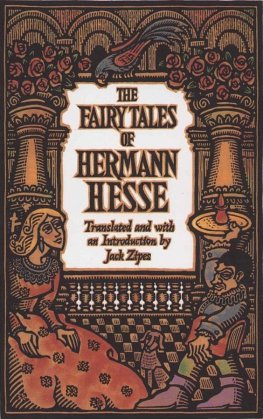


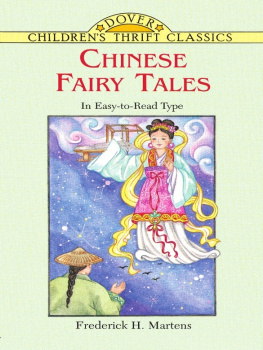

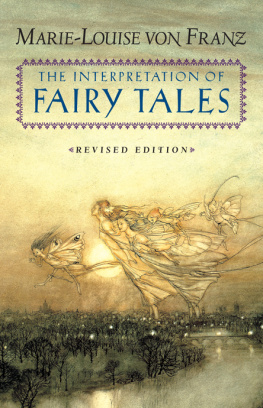
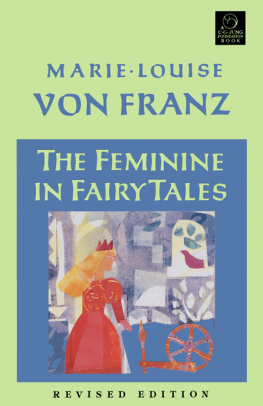

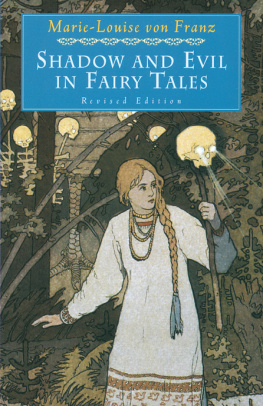

 CONTENTS
CONTENTS 
